The New York Times by ADAM LIPTAK - December 18, 2010
WASHINGTON, DC — Almost 40 years ago, a Virginia lawyer named Lewis F. Powell Jr. warned that the nation’s free enterprise system was under attack. He urged the U.S. Chamber of Commerce to assemble “a highly competent staff of lawyers” and retain outside counsel “of national standing and reputation” to appear before the Supreme Court and advance the interests of American business. “Under our constitutional system, especially with an activist-minded Supreme Court,” he wrote, “the judiciary may be the most important instrument for social, economic and political change.” Mr. Powell, who joined the Supreme Court a year later in 1972 and died in 1998, got his wish — and never more so than with the court led by Chief Justice John G. Roberts Jr. The chamber now files briefs in most major business cases. The side it supported in the last term won 13 of 16 cases. Six of those were decided with a majority vote of five justices, and five of those decisions favored the chamber’s side. One of the them was Citizens United, in which the chamber successfully urged the court to guarantee what it called “free corporate speech” by lifting restrictions on campaign spending. The chamber’s success rate is but one indication of the Roberts court’s leanings on business issues. A new study, prepared for The New York Times by scholars at Northwestern University and the University of Chicago, analyzed some 1,450 decisions since 1953. It showed that the percentage of business cases on the Supreme Court docket has grown in the Roberts years, as has the percentage of cases won by business interests. The Roberts court, which has completed five terms, ruled for business interests 61 percent of the time, compared with 46 percent in the last five years of the court led by Chief Justice William H. Rehnquist, who died in 2005, and 42 percent by all courts since 1953. Those differences are statistically significant, the study found. It was prepared by Lee Epstein, a political scientist at Northwestern’s law school; William M. Landes, an economist at the University of Chicago; and Judge Richard A. Posner, who serves on the federal appeals court in Chicago and teaches law at the University of Chicago. The Roberts court’s engagement with business issues has risen along with the emergence of a breed of lawyers specializing in Supreme Court advocacy, many of them veterans of the United States solicitor general’s office, which represents the federal government in the court. These specialists have been extraordinarily successful, both in persuading the court to hear business cases and to rule in favor of their clients. The Supreme Court’s business docket has stayed active in the current term, which began in October. In a single week this month, the court heard arguments in a case brought by the chamber challenging an Arizona law that imposes penalties on companies that hire illegal workers, and it agreed to hear two cases that could reshape class-action and environmental law. The chamber had urged the court to hear both cases. It said one of them, an enormous sex-discrimination class-action lawsuit against Wal-Mart, posed “grave risks for American business.” It said the other, a suit by eight states against power companies over carbon dioxide emissions, “has potentially disastrous implications for the U.S. business community.” The court’s docket is studded with other important business cases as well, including ones concerning consumer class-action suits and claims of employment discrimination and securities fraud. The chamber has filed supporting briefs in all of them. In AT&T Mobility v. Concepcion, for instance, the chamber urged the court to allow companies to use standard-form contracts that in essence forbid consumers who sign them from pursuing class-action suits. In Thompson v. North American Stainless, the chamber asked the court to forbid some employment discrimination claims, saying that “it costs, on average, over $120,000 just to defend a wrongful-discharge claim.” Next month, the court will hear arguments in 11 cases. The chamber says it will file briefs in seven of them.
The Chamber’s Success
The Chamber of Commerce spent tens of millions of dollars in the recent midterm elections, mostly to help Republican candidates. It says that it has 300,000 members, businesses and organizations “of every size, sector and region,” and that its spending furthered the interests of some three million businesses, most of them small ones. But the chamber’s mission is by no means limited to the elected branches of government. “A central function of the chamber,” it told the Supreme Court in a recent brief, “is to represent the interests of its members in important matters before the courts.” The vehicle for that is the litigation unit that was envisioned by Mr. Powell, the National Chamber Litigation Center, which says it is “the voice of business in the courts on issues of national concern to the business community.” Its board includes executives from some of the nation’s biggest companies, including Ford, Verizon, Lockheed Martin, Viacom and GlaxoSmithKline. On the center’s 30th anniversary in 2007, Carter G. Phillips, who often represents the chamber and has argued more Supreme Court cases than any active lawyer in private practice, reflected on its influence. “I know from personal experience that the chamber’s support carries significant weight with the justices,” he wrote. “Except for the solicitor general representing the United States, no single entity has more influence on what cases the Supreme Court decides and how it decides them than the National Chamber Litigation Center.” A study prepared by the Constitutional Accountability Center, a liberal group, examined the center’s success rate in the Supreme Court. It found that the positions supported by the chamber prevailed 68 percent of the time in the Roberts court, compared with 56 percent in the last 11 years of the Rehnquist court, a period without changes in the court’s membership. Robin S. Conrad, executive vice president of the chamber’s litigation unit, said the center’s analysis was flattering but superficial, and she questioned its comparisons. The chamber does not participate in all business cases, she said. The mix of cases before the court has changed over time. And the chamber has become more active. But Ms. Conrad acknowledged her group’s exceptional track record. “Why have we been successful?” she asked. “I’d like to think it’s because of the quality of the arguments and the briefs we present to the court.” “The court is looking for reliable voices to confirm its decisions, and I’d like to think it’s looking to the chamber because it tells a straight story, and we try not to be shrill or ideological,” Ms. Conrad said. “The chamber has earned a reputation for being a credible voice of business.”
Doug Kendall, president of the Constitutional Accountability Center, drew a different conclusion, saying the numbers proved that the Roberts court increasingly sided with corporate interests. He also said the study documented “a sharp ideological divide that did not exist before 2005.” In the last 11 terms of the Rehnquist court, the five more conservative justices voted for the chamber’s position 61 percent of the time, while the four more liberal justices voted for it 48 percent of the time. In the first five terms of the Roberts court, the corresponding bloc of five more conservative justices voted for the chamber’s position 74 percent of the time, and the four more liberal justices 43 percent of the time. But counting votes is not the same thing as assessing results, Ms. Conrad said. “Our research has shown that the vast majority of business decisions are decided by a lopsided majority of 7 to 2 or more,” she said. Over the Roberts court’s first five terms, Ms. Conrad said, only 10 percent of the business docket was decided by the classic 5-to-4 split, with Justice Anthony M. Kennedy joining the court’s four more conservative members in the majority. The idea that the Supreme Court reflexively rules for the chamber and other business interests is too simplistic, many legal scholars and practitioners say. If the court favors business, they say, it is as part of a broader orientation toward free markets and a wariness of many kinds of lawsuits. “The Roberts court appears to be a mainstream, traditional, modern Republican, conservative court,” said Bradley W. Joondeph, a law professor at Santa Clara University and a former law clerk to Justice Sandra Day O’Connor. “Part of its constellation of commitments is against the regulation of business and, in particular, the regulation of business through litigation.” A prominent Supreme Court advocate who often represents businesses, Maureen E. Mahoney, chose her words carefully when asked at a chamber news briefing in September whether the Roberts court was especially receptive to the kinds of arguments pressed by corporations. “The best court for getting a fair hearing on those issues,” she said, “is the Supreme Court.”
Government Experience
An additional explanation for the recent successes of business interests in the Supreme Court may lie in the rise of specialized practice groups at major law firms led by veterans of the solicitor general’s office. Turning service as United States solicitor general into a career at a commercial firm is a relatively new phenomenon, according to a recent article by Matthew L. Sundquist in The Charleston Law Review. From 1952 to 1981, he wrote, former solicitors general usually became judges, joined law schools or worked as public servants. In the next 15 years, they split their time between academic and legal work, often consulting with law firms with specialized Supreme Court practices. Starting in 1996, every former solicitor general, with one exception, has gone on to supervise a Supreme Court practice at a major law firm, earning as much as $5 million a year. The exception is Justice Elena Kagan, who joined the court in August. These specialists make their livings representing business interests, and they have used the skills they honed in government service to achieve notable successes in the Supreme Court. They had a particularly good run, for instance, in environmental cases in the term that ended in 2009. “For the first time, a series of industry clients last term turned repeatedly to the expert Supreme Court bar for assistance in a host of cases arising under federal pollution control laws,” Richard J. Lazarus, a law professor at Georgetown, wrote in The Yale Law Journal Online last February. “The result was palpable and formed the basis of the best term that industry has ever enjoyed before the court in environmental cases.” Among these lawyers were some of the most prominent members of the specialized Supreme Court bar. Though the odds of obtaining Supreme Court review are about one in 100, these lawyers persuaded the court to hear four cases that “would not have seemed to have a remote chance of review,” Professor Lazarus wrote. They won every time.
In one of the cases, Theodore B. Olson, who had served as solicitor general in the administration of President George W. Bush, persuaded the court not only to hear the case but also to rule for his client, making it easier to dump mining waste into an Alaskan lake. In another big environmental case, Miguel A. Estrada, also a veteran of the solicitor general’s office, persuaded the Supreme Court not to hear a case, though the lower courts were split on the question it presented and the federal government had implored the justices to resolve it. Mr. Estrada’s client, McWane Inc., a pipe manufacturer in Alabama, had been convicted of discharging untreated industrial pollutants into a creek. An appeals court threw out the conviction and a $5 million fine, saying the creek was not covered by the Clean Water Act. Mr. Estrada’s skill in persuading the court to let that decision stand was the term’s coup de grâce, Professor Lazarus wrote. But a broader look at the Roberts court’s environmental cases by Jonathan H. Adler, a law professor at Case Western Reserve University, found no pro-business trend. “The Roberts court’s environmental decisions issued to date suggest neither a disposition toward business nor a hostility toward environmental regulation,” Professor Adler wrote in his article, published last year in The Santa Clara Law Review. “The ‘pro-business’ position has prevailed in some cases, and lost in others. If the relative magnitude of the cases is taken into account, it is even more difficult to argue that the Roberts court has been ‘pro-business’ in this area.”
There has been less dispute about the victories business groups have recently enjoyed in other areas of the law. David L. Franklin, a law professor at DePaul University, wrote in another article in The Santa Clara Law Review last year that the chamber had been quite successful in the Roberts court in four of what he considered five main categories of cases — punitive damages, arbitration of consumer and other disputes, the standards for early dismissal of lawsuits, and federal pre-emption of state laws governing injury and other suits. The “conspicuous exception,” he said, was employment discrimination. The numbers support Professor Franklin’s conclusions, but they are small and not statistically significant. Even in employment discrimination cases, however, the available numbers are subject to two interpretations. True, the Roberts court’s 16 decisions have been evenly divided, according to an analysis by Professor Epstein at Northwestern. But the Rehnquist court ruled in favor of people claiming discrimination more often — 64 percent of the time. All of this is to say that determining whether the Supreme Court is “pro-business” or “anti-business” can be difficult. There will always be exceptions.
“The story of a conservative, activist, pro-corporatist Roberts court may sound compelling at first blush, particularly with its repetition and regrettable distortion of the cases involved, but it is just a story — and a fictional one at that,” Robert Alt, a lawyer with the Heritage Foundation, a conservative group, testified at Justice Kagan’s confirmation hearings last summer. He listed several major cases in which the Roberts court had ruled against business interests, including a drug maker and a tobacco company. He also noted that some of the court’s more important pro-business cases, including ones casting doubt on the conviction of an Enron executive and cutting the punitive damages in the Exxon Valdez oil spill, were written by liberal justices. It is clear, though, that the Supreme Court these days is increasingly focused on business issues. “The fraction of business cases on the docket has grown from 21 percent in the last five years of the Rehnquist court to 27 percent during the Roberts years,” Professor Epstein said. “This isn’t a small jump.” Ms. Conrad, of the chamber, said part of her group’s role was to keep its agenda before a court that is deciding about half as many cases as it did in the 1980s. One way to do that, she said, is by filing briefs urging the court to hear particular cases, an effort that is ordinarily a 1-in-100 long shot. But the chamber has succeeded about 30 percent of the time in persuading the Roberts court to take its cases, Ms. Conrad said. “There has been a return on investment, not to sound too crass,” she said.
The Chamber’s Success
The Chamber of Commerce spent tens of millions of dollars in the recent midterm elections, mostly to help Republican candidates. It says that it has 300,000 members, businesses and organizations “of every size, sector and region,” and that its spending furthered the interests of some three million businesses, most of them small ones. But the chamber’s mission is by no means limited to the elected branches of government. “A central function of the chamber,” it told the Supreme Court in a recent brief, “is to represent the interests of its members in important matters before the courts.” The vehicle for that is the litigation unit that was envisioned by Mr. Powell, the National Chamber Litigation Center, which says it is “the voice of business in the courts on issues of national concern to the business community.” Its board includes executives from some of the nation’s biggest companies, including Ford, Verizon, Lockheed Martin, Viacom and GlaxoSmithKline. On the center’s 30th anniversary in 2007, Carter G. Phillips, who often represents the chamber and has argued more Supreme Court cases than any active lawyer in private practice, reflected on its influence. “I know from personal experience that the chamber’s support carries significant weight with the justices,” he wrote. “Except for the solicitor general representing the United States, no single entity has more influence on what cases the Supreme Court decides and how it decides them than the National Chamber Litigation Center.” A study prepared by the Constitutional Accountability Center, a liberal group, examined the center’s success rate in the Supreme Court. It found that the positions supported by the chamber prevailed 68 percent of the time in the Roberts court, compared with 56 percent in the last 11 years of the Rehnquist court, a period without changes in the court’s membership. Robin S. Conrad, executive vice president of the chamber’s litigation unit, said the center’s analysis was flattering but superficial, and she questioned its comparisons. The chamber does not participate in all business cases, she said. The mix of cases before the court has changed over time. And the chamber has become more active. But Ms. Conrad acknowledged her group’s exceptional track record. “Why have we been successful?” she asked. “I’d like to think it’s because of the quality of the arguments and the briefs we present to the court.” “The court is looking for reliable voices to confirm its decisions, and I’d like to think it’s looking to the chamber because it tells a straight story, and we try not to be shrill or ideological,” Ms. Conrad said. “The chamber has earned a reputation for being a credible voice of business.”
Doug Kendall, president of the Constitutional Accountability Center, drew a different conclusion, saying the numbers proved that the Roberts court increasingly sided with corporate interests. He also said the study documented “a sharp ideological divide that did not exist before 2005.” In the last 11 terms of the Rehnquist court, the five more conservative justices voted for the chamber’s position 61 percent of the time, while the four more liberal justices voted for it 48 percent of the time. In the first five terms of the Roberts court, the corresponding bloc of five more conservative justices voted for the chamber’s position 74 percent of the time, and the four more liberal justices 43 percent of the time. But counting votes is not the same thing as assessing results, Ms. Conrad said. “Our research has shown that the vast majority of business decisions are decided by a lopsided majority of 7 to 2 or more,” she said. Over the Roberts court’s first five terms, Ms. Conrad said, only 10 percent of the business docket was decided by the classic 5-to-4 split, with Justice Anthony M. Kennedy joining the court’s four more conservative members in the majority. The idea that the Supreme Court reflexively rules for the chamber and other business interests is too simplistic, many legal scholars and practitioners say. If the court favors business, they say, it is as part of a broader orientation toward free markets and a wariness of many kinds of lawsuits. “The Roberts court appears to be a mainstream, traditional, modern Republican, conservative court,” said Bradley W. Joondeph, a law professor at Santa Clara University and a former law clerk to Justice Sandra Day O’Connor. “Part of its constellation of commitments is against the regulation of business and, in particular, the regulation of business through litigation.” A prominent Supreme Court advocate who often represents businesses, Maureen E. Mahoney, chose her words carefully when asked at a chamber news briefing in September whether the Roberts court was especially receptive to the kinds of arguments pressed by corporations. “The best court for getting a fair hearing on those issues,” she said, “is the Supreme Court.”
Government Experience
An additional explanation for the recent successes of business interests in the Supreme Court may lie in the rise of specialized practice groups at major law firms led by veterans of the solicitor general’s office. Turning service as United States solicitor general into a career at a commercial firm is a relatively new phenomenon, according to a recent article by Matthew L. Sundquist in The Charleston Law Review. From 1952 to 1981, he wrote, former solicitors general usually became judges, joined law schools or worked as public servants. In the next 15 years, they split their time between academic and legal work, often consulting with law firms with specialized Supreme Court practices. Starting in 1996, every former solicitor general, with one exception, has gone on to supervise a Supreme Court practice at a major law firm, earning as much as $5 million a year. The exception is Justice Elena Kagan, who joined the court in August. These specialists make their livings representing business interests, and they have used the skills they honed in government service to achieve notable successes in the Supreme Court. They had a particularly good run, for instance, in environmental cases in the term that ended in 2009. “For the first time, a series of industry clients last term turned repeatedly to the expert Supreme Court bar for assistance in a host of cases arising under federal pollution control laws,” Richard J. Lazarus, a law professor at Georgetown, wrote in The Yale Law Journal Online last February. “The result was palpable and formed the basis of the best term that industry has ever enjoyed before the court in environmental cases.” Among these lawyers were some of the most prominent members of the specialized Supreme Court bar. Though the odds of obtaining Supreme Court review are about one in 100, these lawyers persuaded the court to hear four cases that “would not have seemed to have a remote chance of review,” Professor Lazarus wrote. They won every time.
In one of the cases, Theodore B. Olson, who had served as solicitor general in the administration of President George W. Bush, persuaded the court not only to hear the case but also to rule for his client, making it easier to dump mining waste into an Alaskan lake. In another big environmental case, Miguel A. Estrada, also a veteran of the solicitor general’s office, persuaded the Supreme Court not to hear a case, though the lower courts were split on the question it presented and the federal government had implored the justices to resolve it. Mr. Estrada’s client, McWane Inc., a pipe manufacturer in Alabama, had been convicted of discharging untreated industrial pollutants into a creek. An appeals court threw out the conviction and a $5 million fine, saying the creek was not covered by the Clean Water Act. Mr. Estrada’s skill in persuading the court to let that decision stand was the term’s coup de grâce, Professor Lazarus wrote. But a broader look at the Roberts court’s environmental cases by Jonathan H. Adler, a law professor at Case Western Reserve University, found no pro-business trend. “The Roberts court’s environmental decisions issued to date suggest neither a disposition toward business nor a hostility toward environmental regulation,” Professor Adler wrote in his article, published last year in The Santa Clara Law Review. “The ‘pro-business’ position has prevailed in some cases, and lost in others. If the relative magnitude of the cases is taken into account, it is even more difficult to argue that the Roberts court has been ‘pro-business’ in this area.”
There has been less dispute about the victories business groups have recently enjoyed in other areas of the law. David L. Franklin, a law professor at DePaul University, wrote in another article in The Santa Clara Law Review last year that the chamber had been quite successful in the Roberts court in four of what he considered five main categories of cases — punitive damages, arbitration of consumer and other disputes, the standards for early dismissal of lawsuits, and federal pre-emption of state laws governing injury and other suits. The “conspicuous exception,” he said, was employment discrimination. The numbers support Professor Franklin’s conclusions, but they are small and not statistically significant. Even in employment discrimination cases, however, the available numbers are subject to two interpretations. True, the Roberts court’s 16 decisions have been evenly divided, according to an analysis by Professor Epstein at Northwestern. But the Rehnquist court ruled in favor of people claiming discrimination more often — 64 percent of the time. All of this is to say that determining whether the Supreme Court is “pro-business” or “anti-business” can be difficult. There will always be exceptions.
“The story of a conservative, activist, pro-corporatist Roberts court may sound compelling at first blush, particularly with its repetition and regrettable distortion of the cases involved, but it is just a story — and a fictional one at that,” Robert Alt, a lawyer with the Heritage Foundation, a conservative group, testified at Justice Kagan’s confirmation hearings last summer. He listed several major cases in which the Roberts court had ruled against business interests, including a drug maker and a tobacco company. He also noted that some of the court’s more important pro-business cases, including ones casting doubt on the conviction of an Enron executive and cutting the punitive damages in the Exxon Valdez oil spill, were written by liberal justices. It is clear, though, that the Supreme Court these days is increasingly focused on business issues. “The fraction of business cases on the docket has grown from 21 percent in the last five years of the Rehnquist court to 27 percent during the Roberts years,” Professor Epstein said. “This isn’t a small jump.” Ms. Conrad, of the chamber, said part of her group’s role was to keep its agenda before a court that is deciding about half as many cases as it did in the 1980s. One way to do that, she said, is by filing briefs urging the court to hear particular cases, an effort that is ordinarily a 1-in-100 long shot. But the chamber has succeeded about 30 percent of the time in persuading the Roberts court to take its cases, Ms. Conrad said. “There has been a return on investment, not to sound too crass,” she said.





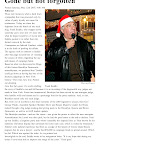

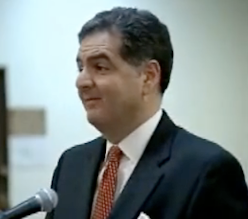
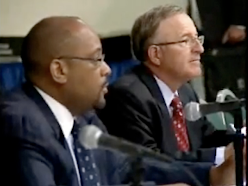
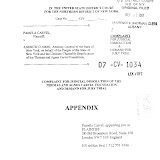

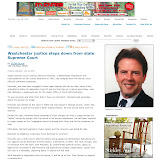
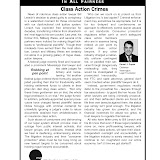

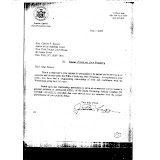
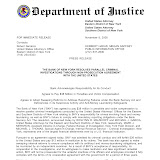
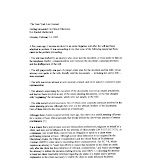
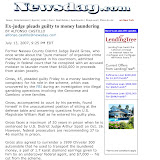
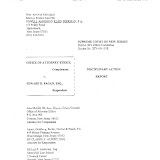
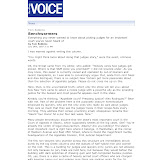

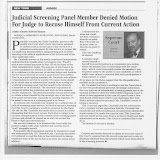



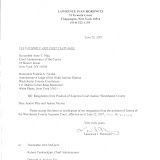
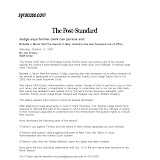
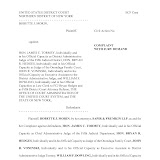

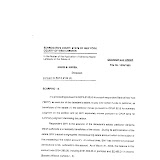
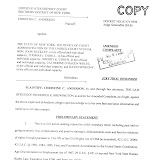
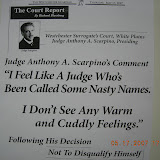
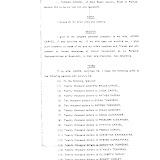
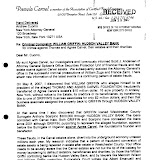
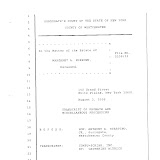
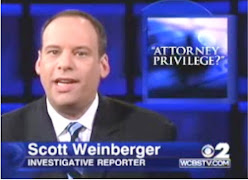
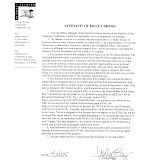

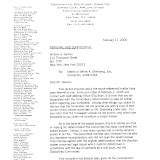
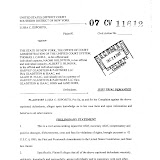
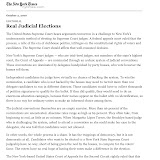
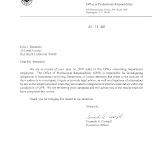
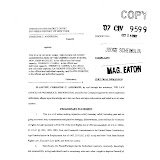
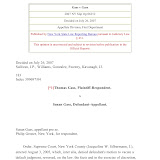
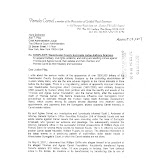

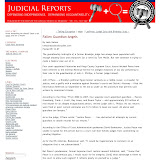
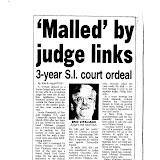
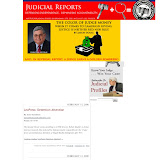
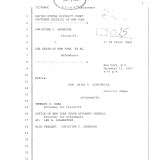
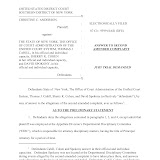
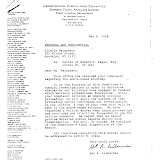
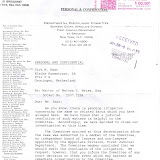
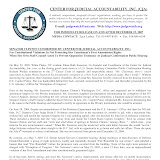


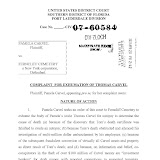
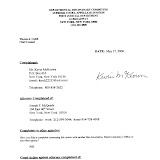
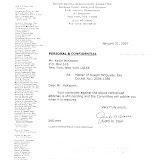
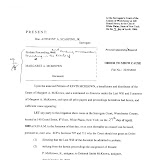
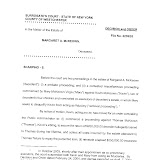
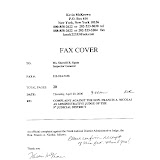

5 comments:
Change.... for GOOD and for BAD.
And unfortunately we've seen over the last 50 years a marginal national judiciary go to a very bad and corrupted system of pay-to-play by disgracing our constitution.
Obviously, the motivation is money.
Money for the businesses and money for the attorneys and judges.
What most people don't understand about how we got into these messes with banks, financial institutions, too large businesses and all those others that have caused the economy to collapse, it that it all has to do with the bottom line.
How much money they can make.
The fact is what many of them are doing is legal, and the citizens and taxpayer of the U.S. are supporting them.
The real problem is the way the tax laws are written.
These companies are rewarded for spending money on attorneys, lobbying, PACs and excessive salaries they pay themselves. They can deduct all of this from what they have to pay in income taxes.
Everyone knows how cheap it is to buy someone off, so it only makes business sense to spend a little to make a lot.
If these companies were not able to deduct expenses that are not directly related running the business they were in, there would not be the incentive to use their income in this manner.
If the Congress closed these loopholes, they wouldn't have to be arguing about raising the tax rates. They could get it out of these blood sucking corporations.
NOT FOR LONG BABY! THE NEW GUYS ARE IN TOWN!
Submit anonymous briefs without the name of law firm. What does a high priced law firm sell? Its presumed connection to the judges on the bench.
Moses had it right(Deut): "judge every dispute fairly, whether it concerns your own people or foreigners who live among you... judge everyone on the same basis, no matter who he is." It's not a country of laws, if the outcome depends on the price/name of your attorney; it's a corrupt judiciary for sale. Justice needs be blind to the identity of the attorneys, also.
With all due respect to the Blog owners and operators and agents et al, it is somewhat insulting to even put that type of "Title" on the Article that was obviously ADDED to the Article's Original Title especially since over 3 years ago now this Blog routinely published PROMINENTLY at the TOP of the Blog that REAL ACTION and REAL RESULTS from Washington, DC would be Forthcoming.
OVER 3 Years Later and NO SUCH REAL ACTION OR REAL RESULTS and NO SIGN that ANY CHANGE is coming from the Judiciary, Look at NY Chief Judge Lippman, the Related cases Still stuck in the mud and mire and ALL of the FAMILIES and CHILDREN DECIMATED by NY Judiciary, Fed Judiciary and total LACK of ANY REAL Action or Results in over 3 years.
Ever think of how much time that is in a Child's Life? That time can NEVER EVER NEVER be Replaced to either the Child or Parent.
So unfortunately it is YES Very Insulting to folks like the Arkansas Father who had to move out of NY due to rampant judicial corruption and Agency ( fed - state ) Inaction.
It is more Insulting that such a Title is made by the Blog Owners around the Holidays, times MORE PRONE to Difficulty for Many.
Would HIGHLY DOUBT ANY ONE Person who Reads this Blog regularly who actually identifies themselves believes the Judiciary Itself will be an "Instrument of Change". That is more Misleading nonsense and providing false hope.
Calling it as seen and watched and experienced. Not to say good things have not emerged and no positive actions. But really, truly, UNTIL there is ACTUAL REAL ACTION and REAL RESULTS there should be NO SUCH TITLE given to any article at this blog based upon this Blog's own Inception and creation.
krh
hvr
Post a Comment